By Louis Ciotola
For nearly 200 years, India was the jewel in the crown of the British Empire. Untold wealth flowed from such cities as Bombay, Madras, and Calcutta, supplying Great Britain with much of what made it possible to construct its world empire. It is almost unbelievable that all of that was initiated through the exploits of just one man, Colonel Robert Clive. It was Clive who dreamed about becoming the first governor of a British India. Until his achievements in Bengal, culminating in the victory at Plassey, the British and the East India Company were more concerned with trade than any grandiose political schemes. Plassey changed everything. As much a coup as an actual battle, Clive’s triumph eliminated any hope that India would remain free of foreign rule.
The events that so profoundly altered the course of both India and the British Empire took place in 1756-1757, solely within the confines of the eastern province of Bengal, India’s most prosperous concerning trade with the outside world. It was there that Mirza Muhammad, better known as Siraj-ud-Daula or “Lamp of State,” reigned as Nawab, having succeeded his grandfather, Aliverdi Khan, in early 1756. Technically, the Nawab of Bengal was one of many viceroys or subahdars serving the Mogul emperor, but in reality, with the decline of the empire, men such as Siraj-ud-Daula ruled as independent kings.
At 27 years old, Siraj-ud-Daula had grown to be a cruel man, known for his affinity for torturing both man and beast. This tendency did not affect his ability to govern, for if he was known as a weak ruler, he was also recognized to be quite talented in regard to affairs of state. He was especially wary of the activities of Europeans, who in the last two centuries had descended on his country like, as his predecessor once described, a swarm of bees.
The English hive in Bengal, centered on the city of Calcutta, was prospering immensely from the trading privileges, or firman, granted by the Mogul emperor to the British East India Company back in 1717. But in early 1756, it faced an almost equally immense problem. The defenses of Fort William, constructed within Calcutta, were in an advanced state of disrepair. With renewed war with France threatening, it was imperative that its governor, Roger Drake, oversee the restoration of the fort, which had lost much of its garrison to the defense of Madras. There was a catch. Such repairs would no doubt alarm Siraj-ud-Daula, as he was paranoid of every seemingly militant gesture the Europeans made.
Perhaps Governor Drake would still have avoided the Nawab’s wrath had it not been for his harboring a fugitive by the name of Krishna Das, a Hindu nobleman accused of embezzling the Nawab’s money as well as being involved a plot to overthrow him. Naturally, this only served to increase Siraj-ud-Daula’s suspicions against the English, and when Drake expelled the emissary who had traveled to Calcutta to address the grievance, his patience was exhausted. “What honor is left to us,” the emissary asked, “when a few traders who have not yet learned to wash their bottoms reply to the ruler’s order by expelling his envoy?”
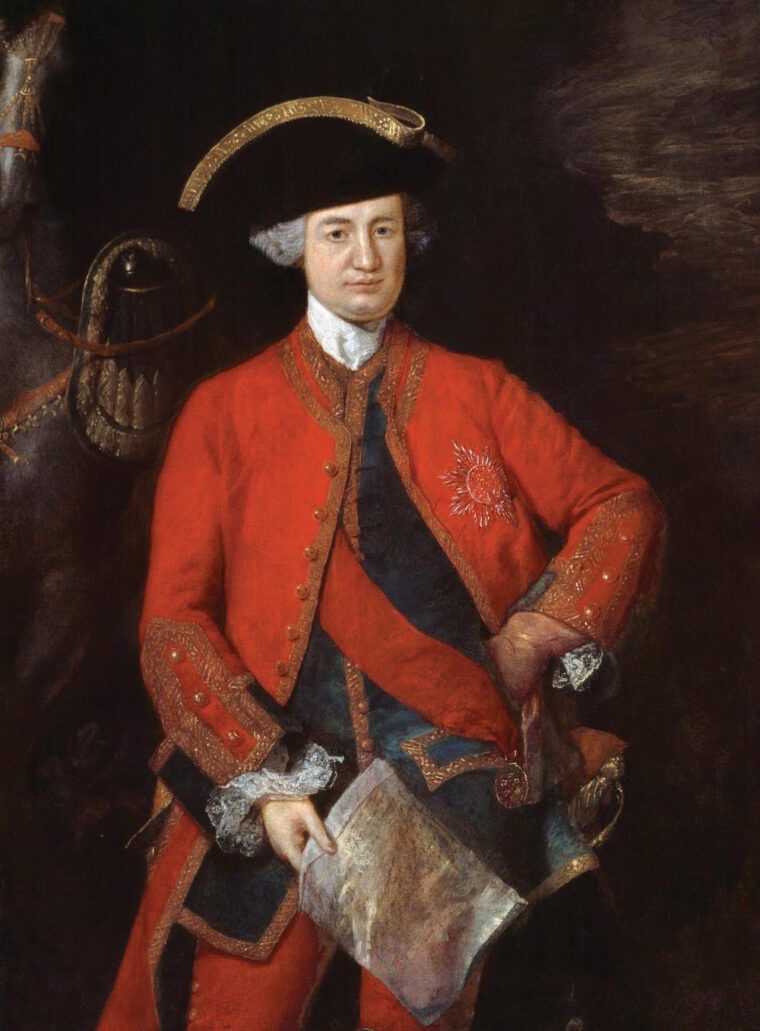
Siraj-ud-Daula was determined to regain that honor. As punishment for the diplomatic fiasco, he led his army to the town of Kasimbazar outside his capital at Murshidabad and sacked the English trading factory located there. Drake, rather than be intimidated, remained defiant and prepared for the attack on Calcutta that he was certain would come.
What was once far from inevitable became a self-fulfilling prophecy. On June 16, Siraj-ud-Daula arrived outside the city with some 50,000 men. The garrison and accompanying militia inside Fort William numbered no more than 500. Given the state of the fortifications and disloyalty of many of the native defenders, the result was a foregone conclusion. Drake fled the city in an infamous display of cowardice, leaving John Holwell to defend the fort and the women and children who remained inside. Without any hope of salvation, he surrendered on June 19. Elated with himself, the Nawab wrote to the emperor that his was “the most glorious achievement in Indostan since the days of Tamerlane.”
Meanwhile, Drake and his fellow refugees from Calcutta made their way down the Hugli River to Fulta. There they wilted in number, eaten alive by disease, but continued to reject talk of peace all the same. The Nawab had no interest in harassing them any further. He had made his point and fully expected them to pay him for the return of their trading privileges. Although he underestimated British resolve, it would be some time before there would be any type of retaliation. The first reinforcements to arrive from Madras, some 200 men under Major Kilpatrick, landed at Fulta on July 30 and suffered as much as those already there. By the time further help arrived, many of them were already long dead.
When news of the fall of Calcutta reached the British in Madras, there was at first indecision on the part of the East India Company’s Madras Council regarding how to respond. A planned expedition into the Deccan Plateau would naturally have to be scrapped for the recapture of Calcutta, but how it would be handled was another matter altogether. On the one hand, dispatching a large number of troops from Madras to Calcutta would weaken the former, making it vulnerable to a French attack should war with that country be renewed. On the other hand, sending too small a force would still weaken Madras while also ensuring failure at Calcutta. Consequently, the Madras Council opted for a strong expedition to Bengal but was prepared to order its recall should Madras become endangered.
The company’s first choice to command the land forces in the expedition fell through due to illness. Its second, Colonel John Aldercron, commander of the king’s regiment in the naval squadron of Vice Admiral Charles Watson, refused due to disagreements regarding deployment and plunder, which he would not agree to share with the company. That left Robert Clive.
Clive was certainly not a last resort. The hero of Arcot was a member of the Madras Council with extensive military and political experience in India. His affiliation with India began in an inauspicious manner when he arrived on the subcontinent in 1744 as a clerk for the East India Company. He had his first taste of battle serving in the company’s forces during the First Carnatic War. He made a name for himself in the fall of 1751 for boldly seizing the city of Arcot in the Carnatic region of southern India along the Bay of Bengal during the Second Carnatic War. For nearly two months, Clive’s small command withstood a siege by a much greater force led by Raza Sahib, the son of French ally Chanda Sahib, the Nawab of Arcot. During the campaign, Clive showed himself to be a bold strategist and an unflinching opponent on the battlefield. He subsequently returned to England where he made an unsuccessful bid for Parliament before returning to India as a colonel in the British Army.
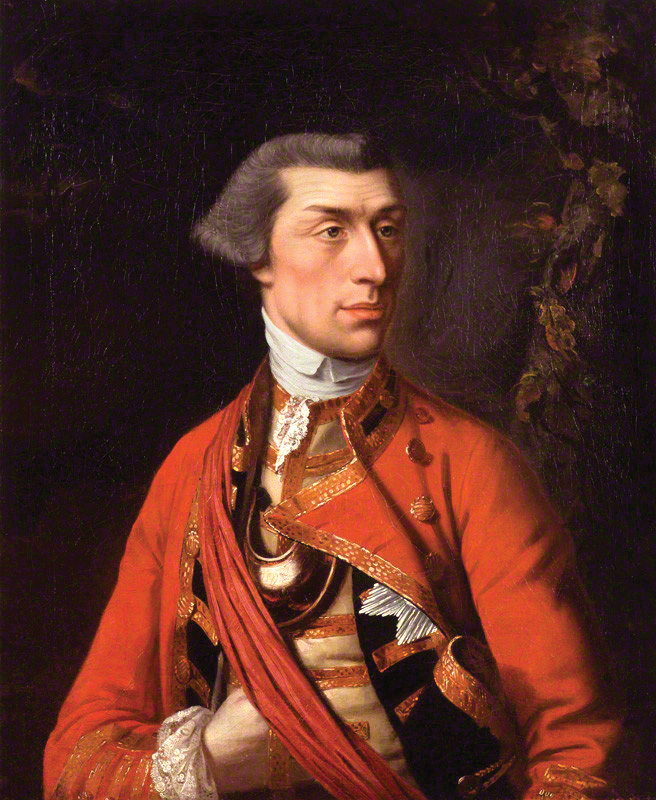
As head of the Bengal expedition, Clive was granted unprecedented power, being in control of military forces without having to answer to Drake or the other civilian leaders exiled at Fulta. This extreme measure was taken purely to prevent the Bengal Council from attempting to keep Clive there in the event he was recalled to Madras. The Madras Council, however, placed Aldercron’s marines under Watson rather than Clive to reduce friction. Nevertheless, Clive was fully contented by what he had obtained, writing home to his father, “It is by far the grandest of my undertakings. I go with great force and great authority.” If all went as he desired, that force would catapult him to the very heights of British power in India.
Aldercron reluctantly loaned his men to the expedition, but he would not risk his artillery. As a result, the enterprise was delayed until October 16, 1756, as substitute company guns were assembled and embarked to join the 528 soldiers, 109 artillerymen, 940 sepoys, and 160 native support troops waiting to set sail. The delay meant that being caught in the monsoon would now be unavoidable. So dominating were the winds that at one point the fleet was blown off course all the way to Ceylon, forcing two ships to return home. It was not until December 15, after an agonizing two months at sea, that the remainder of the fleet anchored off Fulta.
“There is less reason to apprehend a check from the Nawab’s forces, than from the nature of the climate and country,” wrote Clive, no doubt influenced by the tumultuous journey and the conditions he discovered in Fulta. His instructions were not necessarily to engage those forces, but to see what could be done through diplomacy to restore what the company had lost. Ignoring Drake, both Clive and Watson wrote the Nawab demanding satisfaction for the attack on Calcutta. In his letter, Clive sought to intimidate, assuring Siraj-ud-Daula that he too was a great warrior. The Nawab was unimpressed.
As it turned out, the Nawab’s impression was quite inconsequential as Clive had already decided to act militarily. He could hardly stay in disease-ridden Fulta, nor could he provide time for Calcutta to be reinforced. The only logical option was to attack. His first target was the fort of Budge-Budge, which he reached by marching while Watson sailed up the Hugli with the fleet. Anticipating that the defenders were holed up inside, he was subsequently caught by surprise when 3,000 of them led by Calcutta’s governor, Manik Chand, launched a sudden attack, which was likely accidental. Although afflicted with a slight fever, Clive managed to keep his 260 troops in good order and withstood the assault, which cost the enemy some 150 men. A swift counterattack drove them off.
His men exhausted, Clive decided to wait until the following day to assault the fort, even though Watson had already commenced his naval bombardment. The decision did not sit well with Major Eyre Coote, who led Aldercron’s marines and despised Clive as a “company soldier,” or with many of his men. That evening, a drunken Irishman by the name of Strahan foolhardily took matters into his own hands, charging Budge-Budge entirely on his own. Inspired by the display, many of Coote’s men rushed to join him, finding Strahan bloodied but miraculously still alive. Because Manik Chand had fled, the fort fell easily with the loss of only four wounded.
If the victory at Budge-Budge had been easier than expected, the recapture of Calcutta was positively anticlimactic. On January 2, 1757, Watson’s fleet began its bombardment of Fort William, and again Manik Chand fled, this time without even the pretense of resistance. The real anxiety came after the enemy had gone, once Coote had occupied the fortress. On the approach of Clive’s sepoys, Coote, acting on Watson’s orders to allow no one admittance, barred their entry. Soon after, an infuriated Clive arrived on the scene and refused to leave. Coote appealed to Watson, who promptly dispatched word to the “company soldier” that if he failed to vacate Fort William he “should be fired out.” Petty disagreements, it seemed, threatened to undo everything that had been thus far accomplished.
It took the intervention of Thomas Latham, a naval captain and friend of Clive’s, to settle the dispute. Clive, as the leading authority on the scene, was granted Fort William but then turned it over to Watson, who represented the king. Watson in turned handed it over to the civilian authorities, Drake and the Bengal Committee. Drake once again took his place as governor and as the head of the committee promptly attempted to turn everything full circle by asserting his power over Clive. Clive would have none of it, simply assuring the committee that he would do his best to work in cooperation. Although Calcutta had been retaken, he was much more concerned with contending with the Nawab, who was not likely to allow a defeat to go unanswered, than with playing politics with a group of ex-refugees. Recognizing the still pertinent danger, Watson agreed to place Coote and the king’s soldiers under Clive’s command.
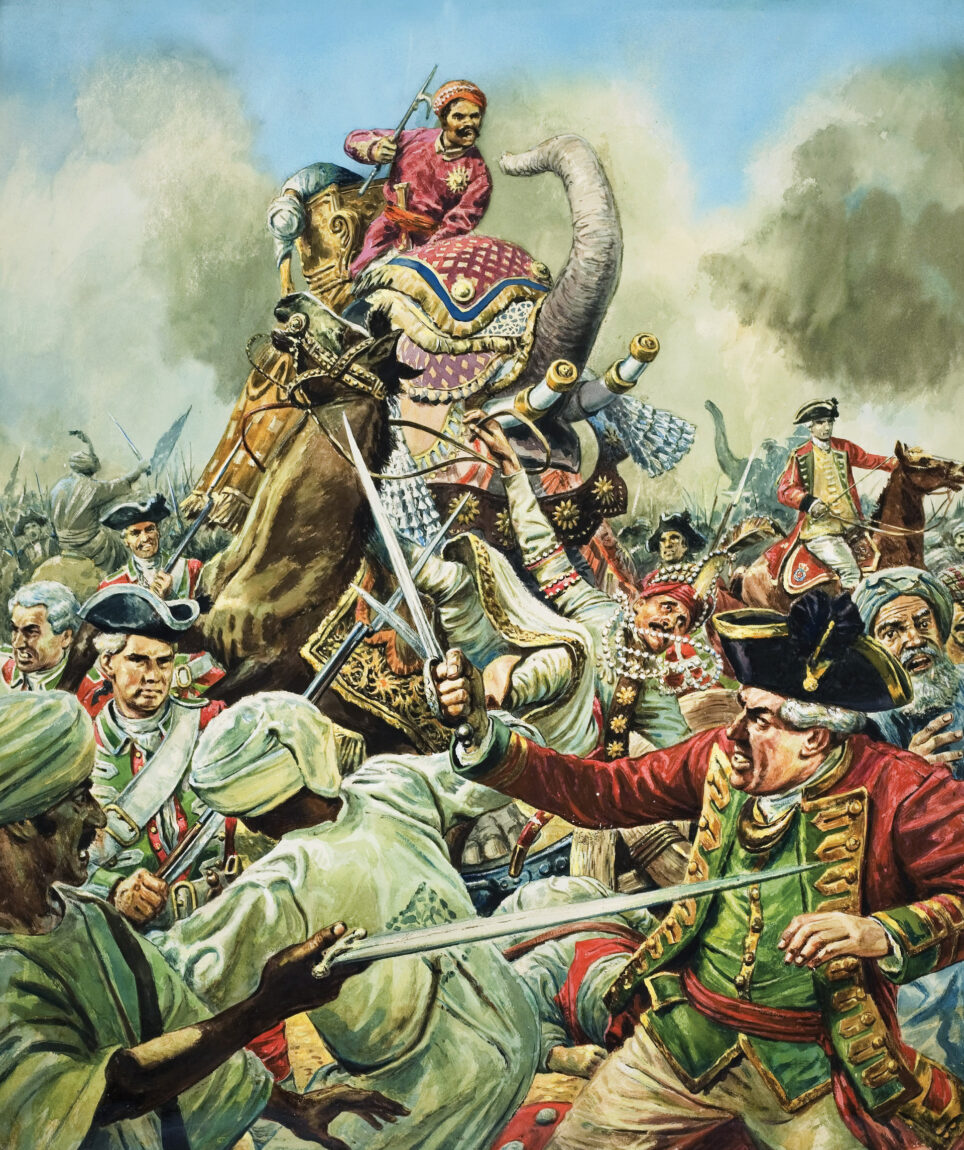
Siraj-ud-Daula’s 60,000-man army. At the Battle of Arcot, Robert Clive and 300 British troops routed the raw and undisciplined host.
Clive now set out to intimidate the Nawab, ordering Kilpatrick forward with 500 men to take the town of Hugli, an important supply depot, hoping to both enhance Calcutta’s security and push Siraj-ud-Daula to either negotiate or come out and fight. Following an eight-hour bombardment on January 9 courtesy of Watson, Kilpatrick stormed Hugli, which had been unsurprisingly abandoned by Manik Chand. For the next nine days, Kilpatrick’s men looted the town before withdrawing on January 18.
The attack had the desired effect of rousing the Nawab, but events were moving far too slowly for Clive, who feared that if he failed to press the issue the enemy would have time to solicit the aid of the French. News that war had erupted in Europe between Great Britain and France made the situation urgent. Little did Clive know how hesitant the French were to assist a ruler in whom they possessed little trust. Nevertheless, Siraj-ud-Daula would come, with or without the French, and it was necessary to prepare. To this effect, Clive ordered the restrengthening of Fort William and the formation of the native Lal Paltan, or Red Brigade, the scarlet-dressed mercenaries who formed the British Bengal army.
Clive set about provoking the Nawab into attacking prematurely, and in this he succeeded. Without fully developing any real strategy, Siraj-ud-Daula marched his force of 18,000 cavalry, 15,000 infantry, 40 cannons, and 50 elephants to the very outskirts of Calcutta. He established his headquarters just beyond a defensive trench, known as the Maratha Ditch, that surrounded the city, at the house of a former English prisoner, the Hindu merchant and notorious double dealer Ominchand. Here, with Ominchand acting as an intermediary, he contemptuously talked peace with the British envoys.
Rather than await the inevitable attack on Fort William, Clive chose to adopt a typical French strategy and launched a surprise night raid on the Nawab’s headquarters, intending to kill, capture, or at the very least intimidate him. Right from the start things went wrong. The operation did not commence until dawn, when a thick fog had descended over the area. As a consequence, the 470 European soldiers, 800 sepoys, and 600 sailors loaned from Watson to pull the artillery became lost and confused on their way to Ominchand’s gardens. Unknowingly, they headed straight into the center of the enemy camp instead of the causeway leading to the gardens. Alerted to their presence by the noise, 300 horsemen of the Nawab’s Pathan guard charged forward. Although the British managed to repel the attack, it was clear their objective was ruined, as by now the enemy was taking measures to protect the approaches to their headquarters.
As the fog lifted, the British found themselves assailed from all sides. First one escape route was cut off, then another, forcing them to charge their way through at a heavy cost of men and cannons. Two of the Nawab’s guns firing from across the Maratha Ditch tore into them, at one point lighting the powder pouch of a grenadier and triggering a violent explosion. It was many hours before Clive and his men at last made their escape. Their casualties amounted to 57 killed, including Clive’s aide-de-camp and secretary, and many more wounded, losses they could ill afford. Siraj-ud-Daula, meanwhile, could more easily absorb his 1,300 casualties, but when his troops became mutinous following the fight he prudently chose to withdraw. It was “the warmest service I ever yet engaged in,” said Clive.
The fog attack was a complete failure from a military standpoint, but from a political one it brought Siraj-ud-Daula to the peace table. Thanks in part to a looming Afghan threat, the Nawab now willingly offered to restore the company’s trading privileges, compensate it for the extensive damage done to Calcutta, and consent to the city’s fortification. Clive, impressed by his own losses, eager to satisfy the company’s desire to get back to business, and still fearful of an alliance between the Nawab and the French, jumped at the offer. In less than two months he had reversed all the events of the previous year.
Not everyone saw it that way. Watson was reluctant to abandon the momentum and when peace was made refused the Nawab’s personal gift to him. He was either unconvinced or unconcerned that the French would interfere, despite the still elevated tensions. But Clive’s focus had already shifted to driving the French from Bengal altogether, arguing that the lull in fighting with the Nawab and the possession of an army provided the perfect opportunity to strike, specifically against their fortress at Chandernagore. There, the French, led by Pierre Renault, were already proving hostile by agreeing to blockade the Hugli for Siraj-ud-Daula to prevent British passage. It seemed only a matter of time before the two officially united. Besides, the company had long ago decided that forcing the French out of Bengal was the primary objective.
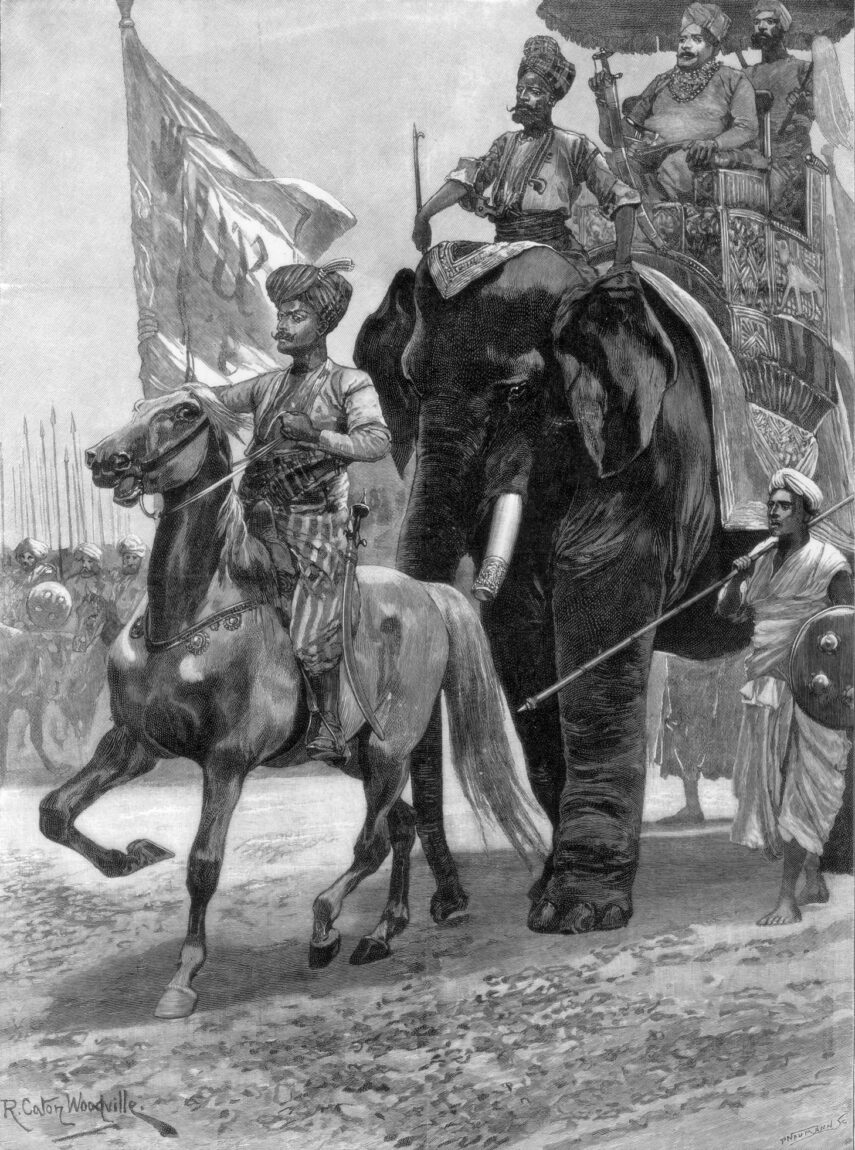
Because of his recent treaty with Siraj-ud-Daula, Clive required his permission to move against Chandernagore. He sent the recently released Watts along with Ominchand, who was specifically requested by the Nawab, to negotiate for it. But Siraj-ud-Daula had no intention of granting his consent. The contending presence of both European powers was an assurance for the Nawab that neither would be able to muster the additional strength necessary to challenge his power. It was a precarious balance the Nawab worked hard to maintain.
Suddenly, and quite conveniently for Clive, that balance was wrecked when a powerful Afghan army materialized along the Nawab’s northwestern frontier. Desperate for assistance, he asked the British for help. Clive agreed to assist but emphasized that he could not march so far from Calcutta with his enemy to his rear at Chandernagore. Reluctantly, Siraj-ud-Daula relented on the point, or at least he appeared to, for his letter to that effect was extremely ambiguous. That did not stop Clive, nor Watson and Watts, from interpreting it as permission to strike. When the Afghan threat turned out to be empty and the Nawab again became more vocal in his objections, the British Army was already much too far along to be halted.
Supplemented by 500 native reinforcements from Bombay, Clive reached Chandernagore on March 8. It was not until March 13 that he initiated hostilities. Although he bombarded the 700-odd defenders, of whom 237 were French, he was unable to storm the fort itself until Watson’s fleet came into play, a necessity made challenging by the intentionally sunken obstacles in the Hugli meant to thwart a naval approach. Withering French fire from within the fort kept his men more than occupied in the meantime.
When Siraj-ud-Daula learned of the British attack, he was enraged and demanded its immediate cessation. Predictably, Clive ignored him. For the time being the Nawab’s forces, led by Rai Durlabh, were keeping their distance while elements within his government pressured him not to intervene. On March 23, Watson’s ships finally navigated through the obstacles and began their bombardment. The French retaliation was brutal. All three participating ships were heavily damaged, with the
70-gun third rate Kent suffering 37 dead while the captain of the 60-gun fourth rate Tyger, Admiral Pocock, was wounded. Watson himself was lucky to escape unharmed. But the French were being hit even harder, and after three hours of murderous fire they opted to surrender.
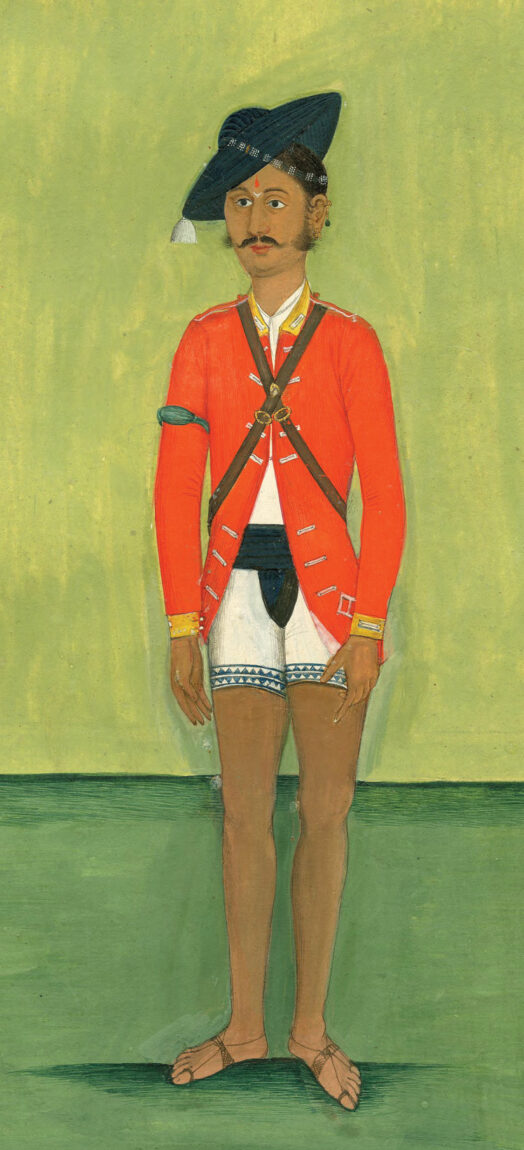
Siraj-ud-Daula’s first inclination was to threaten the English with war, yet a renewed Afghan scare prompted him to instead send Clive a letter of congratulations. When the Afghan crisis again passed, the Nawab switched back to hostility, ordering his general, Mir Jafar, to join his forces with that of Rai Durlabh, who had assembled at Plassey. At the same time, he began to actively petition for French support, a prospect now made much more likely.
It was all rather convenient for Clive, who was looking for a way to really make it big in India. Mounting tensions with the Nawab allowed him to honestly inform the Madras Council that it was too dangerous to return with the situation in Bengal being so unsettled, enabling him to maintain control of an army with which to assert himself. The only problem that remained was finding a way to even the odds against Siraj-ud-Daula and his massive army.
Clive decided that the best way to do that was to exploit the internal divisions within the Nawab’s military and government. Siraj-ud-Daula’s policies and personality were far from universally loved. The prominent Hindu bankers known as the Seths, for example, resented the disruption in trade with the Europeans and were eager to be rid of its cause. At the same time, generals such as Mir Jafar and Rai Durlabh, as well as Manik Chand, grew weary of the abuse they suffered at his hands. He had even once threateningly pointed his cannons at Mir Jafar, turning him into a man willing to act in an underhanded fashion should an opportunity to better his own position present itself.
Clive provided that opportunity. Making contact with the disaffected general through Watts, he offered British recognition to Mir Jafar as the new Nawab in return for military assistance in overthrowing Siraj-ud-Daula. Mir Jafar eagerly accepted, bringing Rai Durlabh and Manik Chand into the conspiracy as well. But there soon after appeared a potentially fatal snag. Ominchand, the sly Hindu merchant not quite trusted by anyone, had previously drawn up his own plot with the Seths, which had been rejected by Clive and the other conspirators. That rejection, in addition to Mir Jafar’s efforts to prevent him from getting wind of the real plot, triggered a huge crisis when Ominchand learned of what was happening through his network of spies. Resentful and always looking to line his pockets, he threatened to expose the plan to Siraj-ud-Daula unless he received a large share of the spoils.
No one wanted to see Ominchand get away with such treachery, least of all Clive. He consequently resolved on a bit of deception designed to outwit the crafty merchant. Drawing up two treaties, one that summarized his terms with Mir Jafar and another that did the same but included a provision to compensate Ominchand, Clive sought to trick him into believing that the conspirators had caved in to his demands. But in reality only the first treaty would be real, while the second, the one Ominchand would see, would be a fake. It was a shady strategy to say the least, and it would come to put a stain on Clive’s reputation.
Because of the dangerous nature of the game, Watts was not able to attain Mir Jafar’s signature until June 5, but once he did so the British sprang into action. After establishing the flimsy pretext that Siraj-ad-Daula had failed to abide by the terms of their previous treaty, Clive began his offensive on June 13. He marched from Chandernagore with nearly 3,000 men, including Coote’s 39th Foot, 2,000 sepoys, and 150 sailors loaned by Watson. The army dragged with it eight six-pounder cannons and two small howitzers. As usual, the Europeans traveled most of the way by boat while the sepoys trudged along the riverbank. There was a sense of urgency in the air. Soon the rains would come, making any such operations nearly impossible. Making matters even more pressing was the state of the newborn conspiracy. The longer Clive dallied, the greater the chance it would unravel.
It appeared to Clive that he had reason to worry. Siraj-ud-Daula had joined Rai Durlabh and Mir Jafar at Plassey and, fearing treason, asked the latter to pledge his loyalty on the Koran, a request the general could hardly refuse. Of course, Clive was unaware of his co-conspirator’s dishonest pledge, but Siraj-ud-Daula’s presence with Mir Jafar at Plassey was enough to spark obvious concerns regarding the state of the plot. In reality, relations between the Nawab and his general were anything but cordial. Siraj-ud-Daula’s well-placed paranoia had prompted a failed attempt to arrest Mir Jafar. It was a decision he quickly regretted when he realized that he needed the general, least of all to calm his mutinous army, which at the end of the day only agreed to remain in the field on payment of a hefty sum. Nonetheless, the Nawab was now watching Mir Jafar closely, an unforeseen development that imperiled the plot considerably.
On June 18, Clive sent Coote ahead to capture the village of Kutna and its large supply of rice. The defenders fled the fort without attempting to resist. Clive arrived shortly thereafter expecting to meet Mir Jafar and his promised 10,000 men, but the Nawab’s presence at Plassey restricted the general’s freedom of movement. Clive began to fear the worst. Increasing his concern was the ambiguity of Mir Jafar’s letters and rumors that he and the Nawab had reconciled their differences. Did Mir Jafar intend to honor his deal with the British, or had he indeed devoted himself to the enemy? Clive simply did not know.
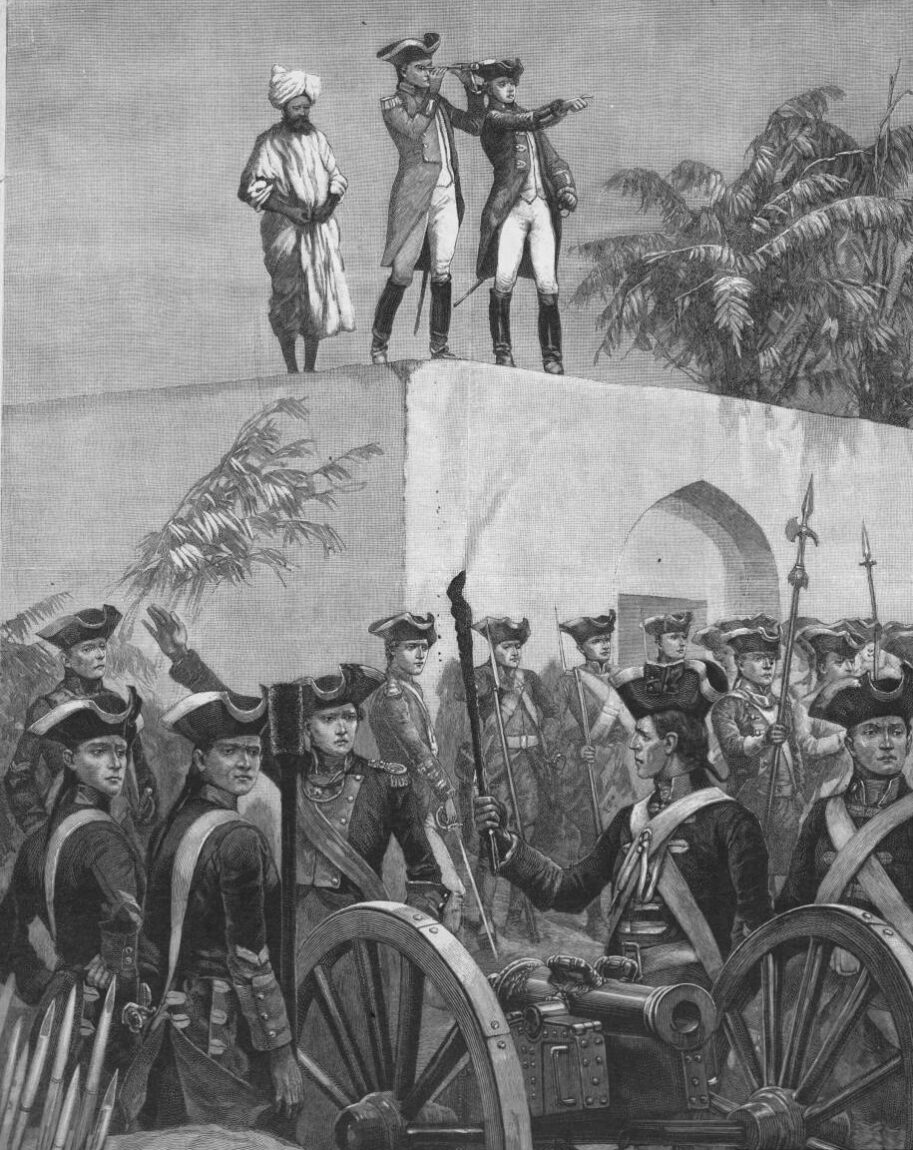
Upon his arrival at the Bhagirathi River, Clive was forced to make the most important decision of his life. His choices were to either cross the river and proceed to Plassey or remain where he was and await events. Both options carried tremendous risk. The river was fordable at the time, but should Clive cross only to be betrayed by Mir Jafar and defeated at Plassey, it would likely be impossible to escape back across, as the river would by then surely be swollen by the monsoon rains. The army would be trapped and annihilated. But failing to cross would expose him as being weak, which would certainly cause Mir Jafar to pull his support for the plot, assuming he had not already secretly done so. Furthermore, delay would provide time for Siraj-ud-Daula to acquire French reinforcements, 300 of which were only three days march away. The dilemma could scarcely have been more gut wrenching, and for the first time Clive wavered in his typically resolute self-confidence.
On June 21, Clive took the unusual step of garnering other opinions, calling a council of war to debate the options. Unsurprisingly, Coote loudly voiced a desire to meet the Nawab in battle, though he did so under the mistaken belief that Clive intended to withdraw all the way back to Calcutta. Clive, however, along with a number of other officers, expressed the imprudence of such an action. It was just too great a risk.
A mere one hour following the council, Clive suddenly changed his mind. Why he did so remains unclear, though undoubtedly he came to the conclusion that the current situation was likely his only chance to achieve the lofty goals he had set for himself. It was a case of high risk, high reward.
Shortly thereafter, as if from the hand of providence, he received a letter from Mir Jafar. While the general still appeared noncommittal, the letter warned of the Nawab’s entrenchments at Plassey and urged an immediate attack. It was enough to convince Clive that at the very least Mir Jafar would stand neutral. The following afternoon he ordered the army to cross the river. After an eight-hour march through pouring rain, it arrived at Plassey at 1 am on June 23, camping in an orchard of mango trees known as the Orchard of a Hundred Thousand Trees. There, Clive learned that Mir Jafar had yet to abandon the Nawab. He could do little but nervously wait to see if his gamble would bring glory or disaster.
Clive had ample reason to be concerned. Peering through a telescope from the roof of the hunting lodge where he spent his sleepless night, Clive saw amassed against him an army that greatly outnumbered his own. Factoring in those contingents led by Mir Jafar and Rai Durlabh, whose loyalties were as yet uncertain, the Nawab’s forces amounted to some 60,000 men. It came as a surprise because the rumors of mutiny had convinced Clive that many of Siraj-ud-Daula’s soldiers must have surely deserted. Two-thirds of the force consisted of infantry, while the other 20,000 was cavalry, including the skilled Pathans armed with swords and long spears. But the Pathans were the exception. Most of the Nawab’s soldiers were poorly trained and undisciplined.
Siraj-ud-Daula’s front line stood just 200 yards from Clive’s position and consisted of many of his best troops, specifically 7,000 infantry and 5,000 cavalry commanded by Mir Madan. Mir Madan stood in support of the artillery, which totaled 53 pieces and was predominantly situated atop the high banks of two ponds, where it was manned by some 50 Frenchmen led by Monsieur de St. Frais. Farther back with the rest of the army were a number of elephants, draped in cloth of scarlet and gold. But that was only part of the Nawab’s force. An even larger contingent of his army under Mir Jafar stretched east of the grove along the British right flank. If it was indeed Mir Jafar’s intention to betray Clive, he was in the perfect position to swiftly outflank and quite possibly destroy him. That those men were in fact under his co-conspirator’s command, Clive was as yet unaware.
Initially, Clive did not intend to use the mango grove, which sat behind a mud bank, was 300 yards long, and stretched for about a mile. Instead, he massed his army with the grove to its back, placing the Europeans in the center and the sepoys on the wings. Between them on both sides he positioned three cannons while the rest, including the howitzers, remained to the rear on the left flank protected by brick kilns that sat 200 yards in front of the hunting lodge.
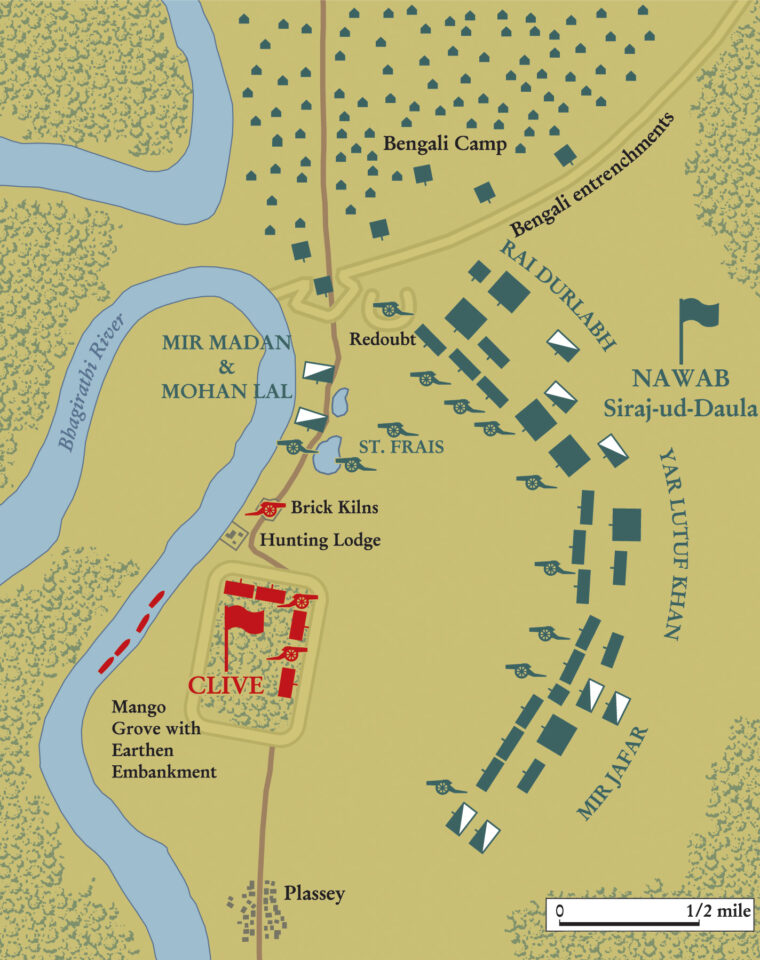
The battle began promptly at 8 am when the Nawab’s cannons opened fire, to which the British responded in kind. Although the British guns were more efficient than their rival’s, it was soon obvious that it was they rather than the enemy who were getting the worst of the bombardment. Siraj-ud-Daula could easily absorb his losses, while Clive could not. After 30 minutes of punishment at the cost of 10 Europeans and 20 sepoys, Clive amended his error of leaving his lines exposed by pulling them back behind the mud bank and into the mango grove. Casualties subsequently dropped off significantly as the enemy fire soared harmlessly overhead into the trees.
Meanwhile, his army had been at Plassey for hours and still there was no word from Mir Jafar. Clive now decided to avoid a formal battle. Instead, he planned to stay put and wait for nightfall, when he would attempt a repeat of the strategy he used before Calcutta. It would be a huge gamble, but so far luck had been with him in such ventures. Whether it would work or not depended largely on the huge segment of the enemy army sitting idle on his right flank. If it remained uncommitted, he would have a chance.
At 12 pm it began to rain, and it continued to do so for 30 minutes. To preserve their powder, the British covered their cannons and ammunition with tarpaulins, a precaution not taken by the Nawab’s men. As a result, the Nawab’s powder was soaked, and his cannons fell silent. But rather than prompt a British attack, it had the exact opposite effect, convincing Mir Madan that if his cannons were useless so too must be the enemy’s guns. Under that false assumption, he led his troops forward only to be surprised when the British six-pounders proved fully operational. The cannons delivered a withering fire, one shot striking Mir Madan in the thigh. Mortally wounded, his men carried him from the field, and the offensive quickly petered out.
Mir Madan’s death shook Siraj-ud-Daula to his core. With the loss of another honorable general, Bahadur Ali Khan, there seemed no one left upon whose loyalty the Nawab could rely. In a panic, Siraj-ud-Daula summoned Mir Jafar to his headquarters. Throwing his hat to the general’s feet, he begged him for his loyalty. Mir Jafar graciously complied, but just as before his pledge was dishonest, as was his advice to withdraw to the entrenchments, which he gave alongside Rai Durlabh. Once out of the Nawab’s presence, he hastily scratched a letter to Clive imploring him to attack. With everything in the balance, he was likely waiting to see which side would prevail. If Siraj-ud-Daula pulled back and the British advanced, there would be an all-out battle and he would soon have his answer, as well as be in a better position to unite with Clive if the circumstances proved right. But the conditions at Plassey proved impossible to control. His letter failed to reach Clive because the messenger was afraid to proceed through the firing, leaving events to chance.
Mir Madan’s disastrous charge had not altered Clive’s plan. His objective remained to strike after nightfall. But when he went back to the lodge to change his wet clothes, events suddenly escaped his control. Heeding the ill-intentioned advice of his generals, the Nawab ordered his army to fall back, although some, chiefly de St. Frais and Mir Madan’s replacement, Mohan Lal, did so only reluctantly. For Siraj-ud-Daula, as for Clive, the battle was supposed to be over. Major Kilpatrick, however, interpreted the enemy movements as a sign of exploitable weakness that demanded immediate action. Without orders, he charged a detachment forward, seizing the banks from which the French had just withdrawn. The battle was on again.
Clive returned to the front lines beside himself with anger. Kilpatrick’s attack exposed his forward units, leaving him with no choice but to fully engage in battle with an all-out offensive to support those who had charged ahead. Besides, at that juncture a withdrawal would likely be construed as a sign of weakness and prompt an enemy counterattack. He ordered Coote’s two divisions and a company of grenadiers to advance. Upon reaching the scene of the action, Clive assumed command over Kilpatrick’s men, sending the insolent major to the rear of the army after a severe dressing down.
When the British advanced, Mohan Lal and the French turned to resist. While the French occupied a redoubt and a wooded hill where they repositioned their cannons, Mohan Lal led a spirited counterattack. With the support of St. Frais’ guns, the Nawab’s cavalry stormed forward into an unbreakable wall. After losing many men and a significant number of officers, Mohan Lal fell back again. The British now held all of the momentum, but it was still not safe to surge ahead. The Nawab’s troops that had been sitting on their right flank during the entire course of the battle remained. If Clive chose to charge into the enemy at his front, those on his flank could easily swoop in and surround him.

For a brief moment around 3 pm, that fear appeared close to being realized when those same enemy troops began marching toward the river to his rear. Unsure of their identity, the British opened fire, but as they drew closer Clive discovered that the threat was in fact Mir Jafar, who had decided to stand neutral after all. Armed with that most vital of information, he now had the green light to press on full force against what remained of Siraj-ud-Daula, leading the charge against the redoubt while Coote made for the hill. In the face of heavy musket fire, both forces captured their objectives, sending the French fleeing to the rear. The attack precipitated mass confusion within the rest of the enemy host as both men and elephants stampeded backward to escape the onslaught. The confusion turned into sheer panic when one of the Nawab’s ammunition depots suddenly exploded. What had begun as a likely defeat for the British had become a total rout of their enemy.
Mir Jafar, as it turned out, had only made his move to join Clive’s lines on word that Siraj-ud-Daula had fled the battle. The Nawab already was long gone, escaping the scene on camelback, when the remnants of his army finally dissolved around 5 pm. The pursuit of the vanquished continued for six miles until, for lack of cavalry, the British were forced to abandon the chase.
The battle cost the Nawab more than 500 men. British losses amounted to less than 70, mostly wounded, and of those predominantly sepoys. At first glance, the lopsided results and the fact that only a quarter of the Nawab’s army actually fought might give the impression that Plassey was not a battle at all, but for those who experienced it, especially Robert Clive, the dramatic uncertainties made it very much a battle until the very end. While it may be said that Plassey was fought more with the pen, Mir Jafar’s cooperation was nevertheless fully dependent on Clive’s effective use of the sword.
Meeting Clive after the battle, Mir Jafar was surprised by the Englishman’s generosity given the former’s lack of participation. “I congratulate you on the victory, which is yours, not mine,” Clive wrote him. But in reality, Clive could afford to be generous because the victory was in fact his. Mir Jafar may have become the new Nawab, but being the Nawab now meant little more than being a British puppet.
Mir Jafar followed Siraj-ud-Daula to Murshidabad but initially made no attempt to capture the fugitive ruler. It was only a few days later, after Siraj-ud-Daula had again fled, that Mir Jafar’s men intercepted him. He was taken back to the capital and there stabbed to death before his mutilated corpse was paraded through the streets on the back of an elephant.
Although the Nawab’s treasury was significantly less than what had been estimated, Clive still walked away with 180,000 pounds worth, which, along with his wages, made him at the age of only 32 one the wealthiest men in India. More important, the agreement with Mir Jafar awarded roughly three million rupees in compensation to Calcutta and also extremely favorable trading rights, including the exclusion of the French from Bengal.
For Clive, wealth was always secondary to status, and high status he achieved, becoming the first British governor of Bengal. Although the crafty and arguably underhanded manner in which he attained that goal somewhat haunted him until his tragic death in 1774, his accomplishments in 1757 have stood the test of time, outlasting even the British Raj in India, which he more than any other individual made possible.
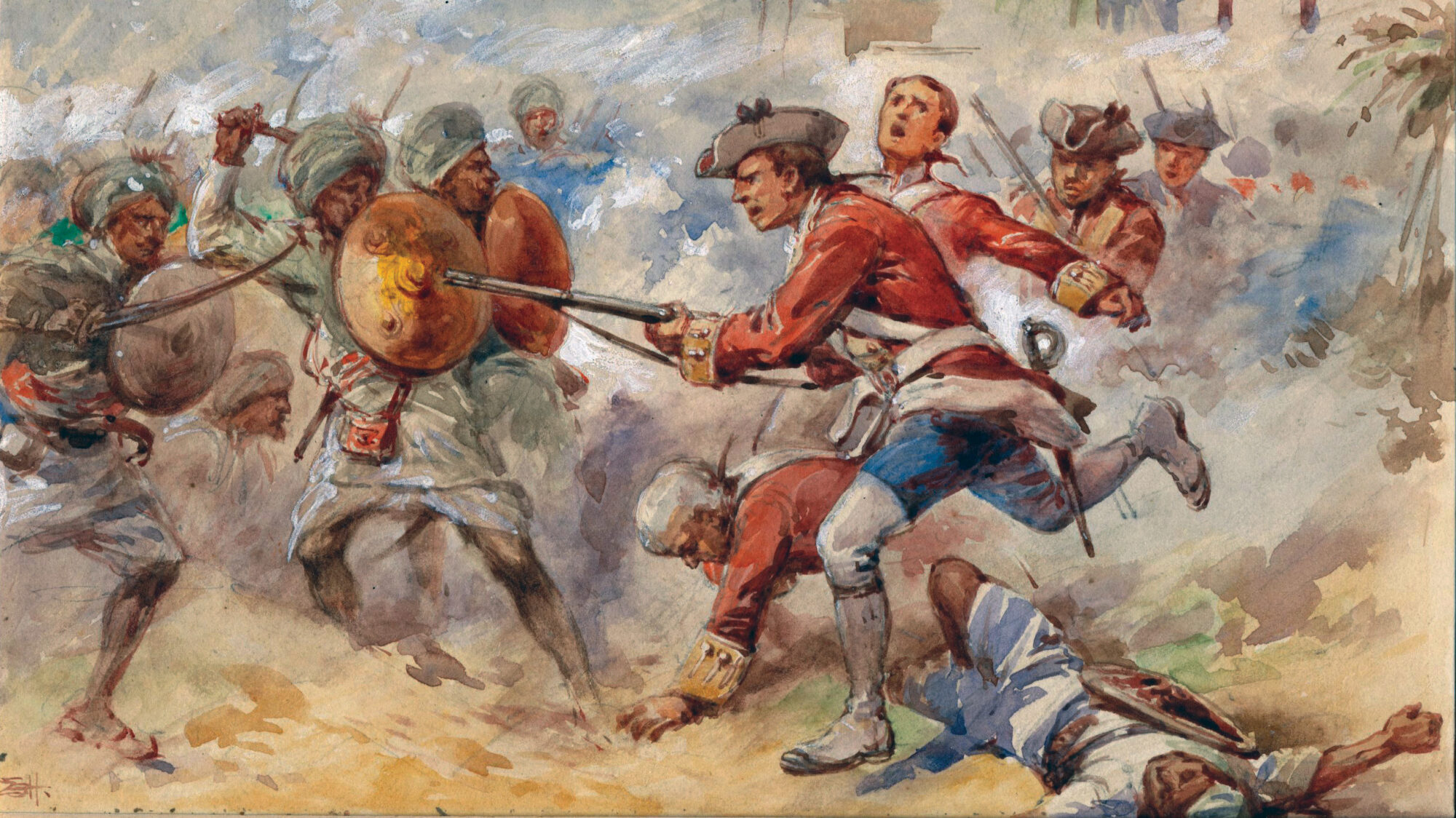
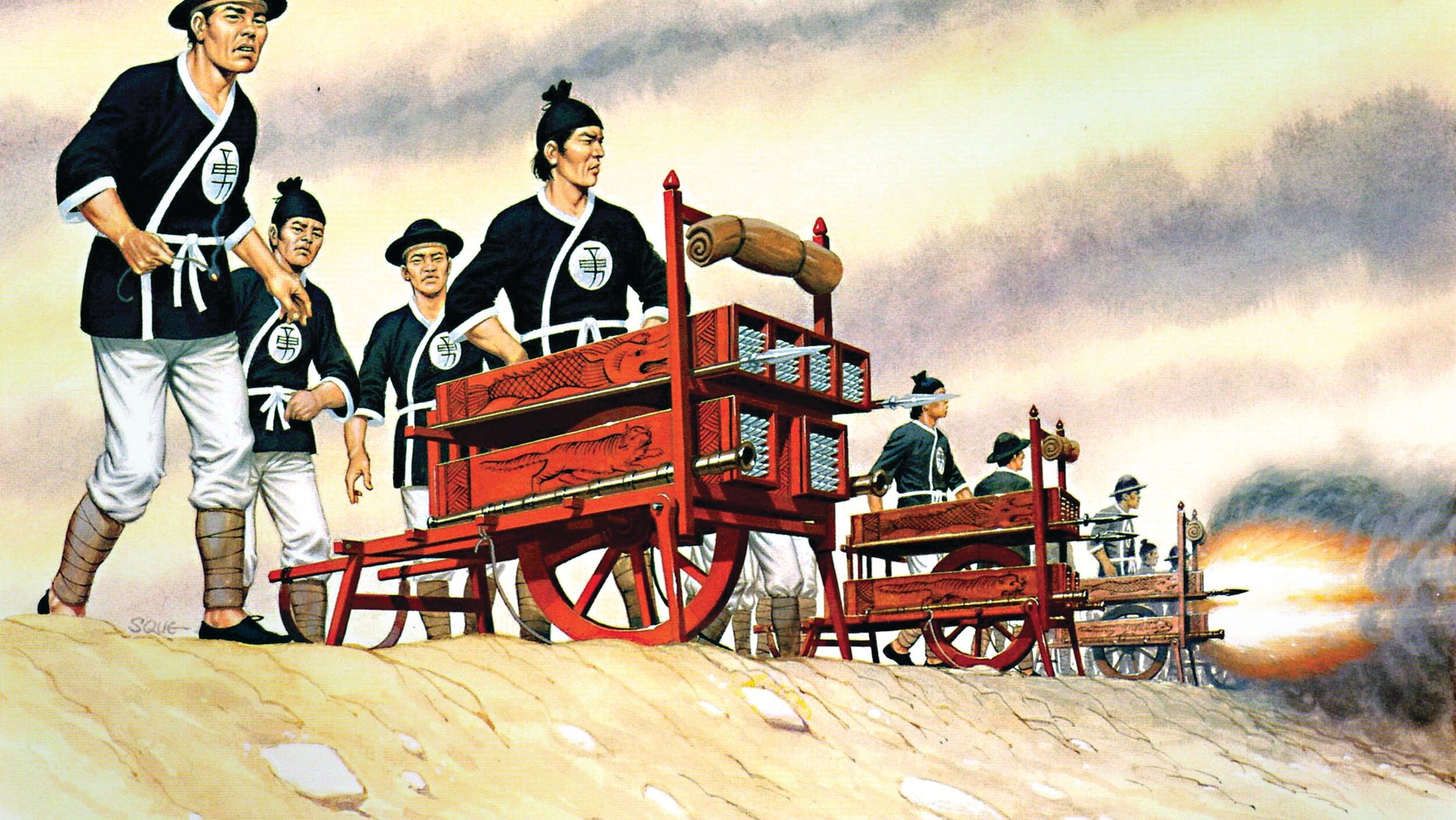
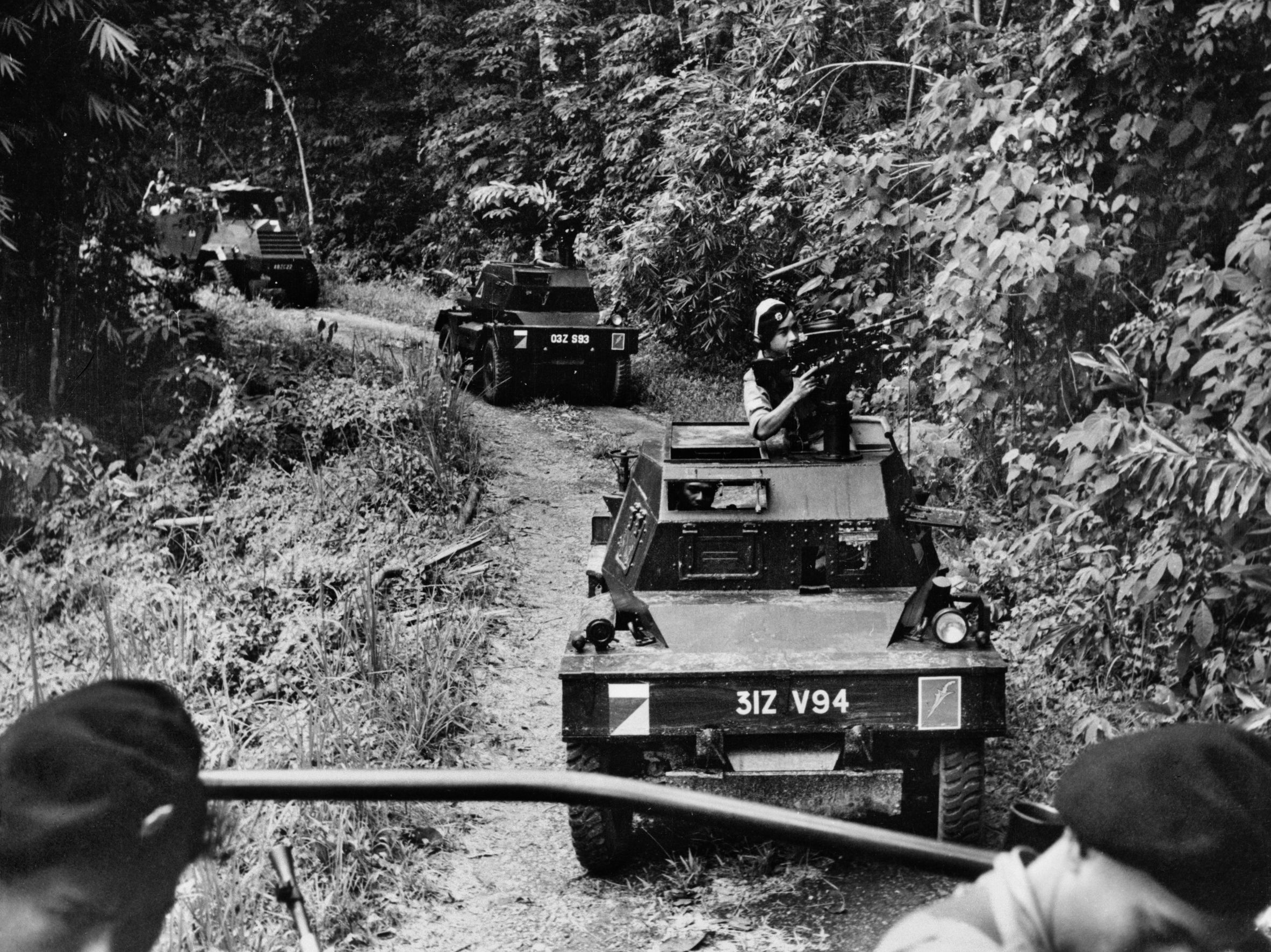
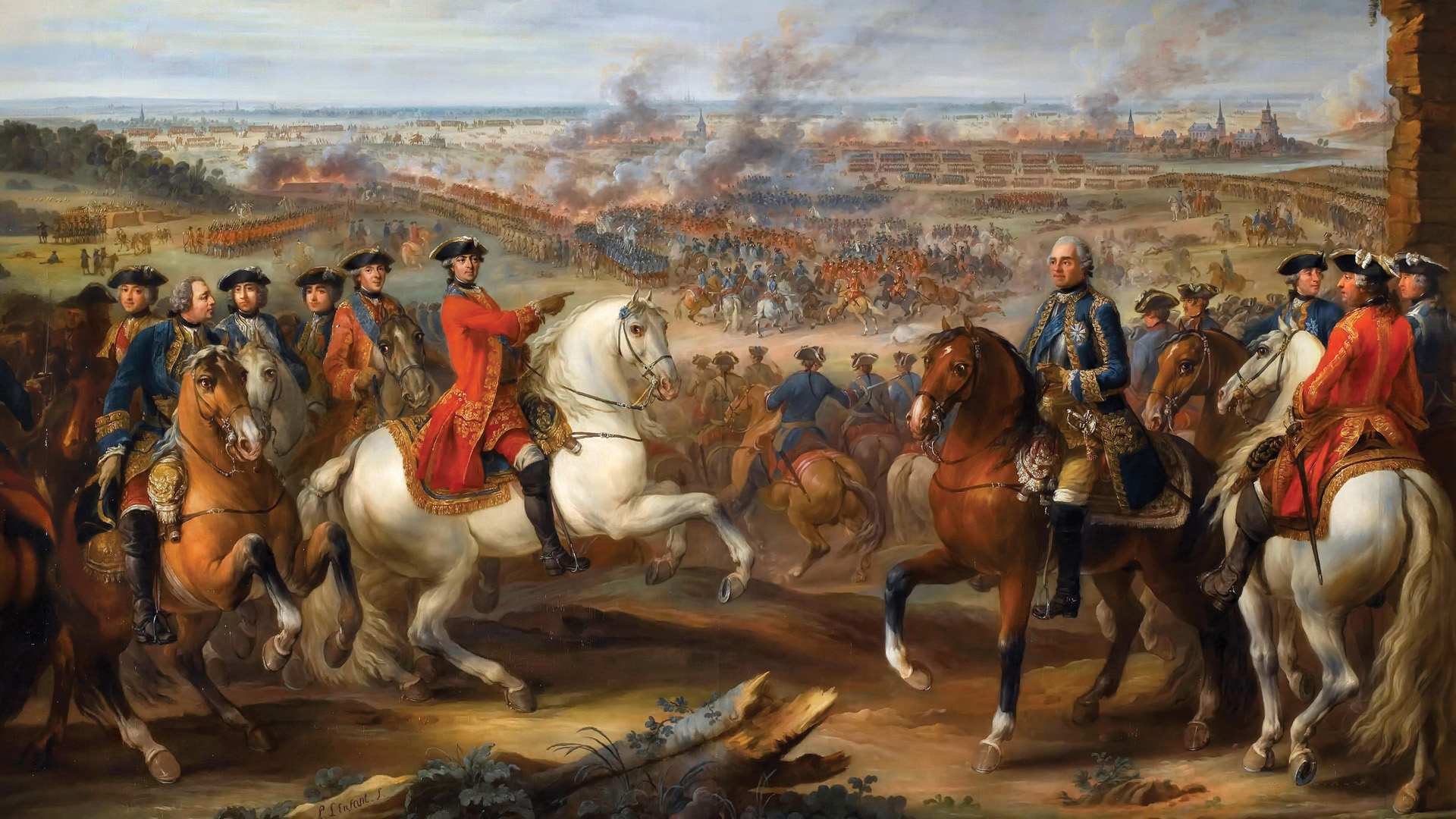
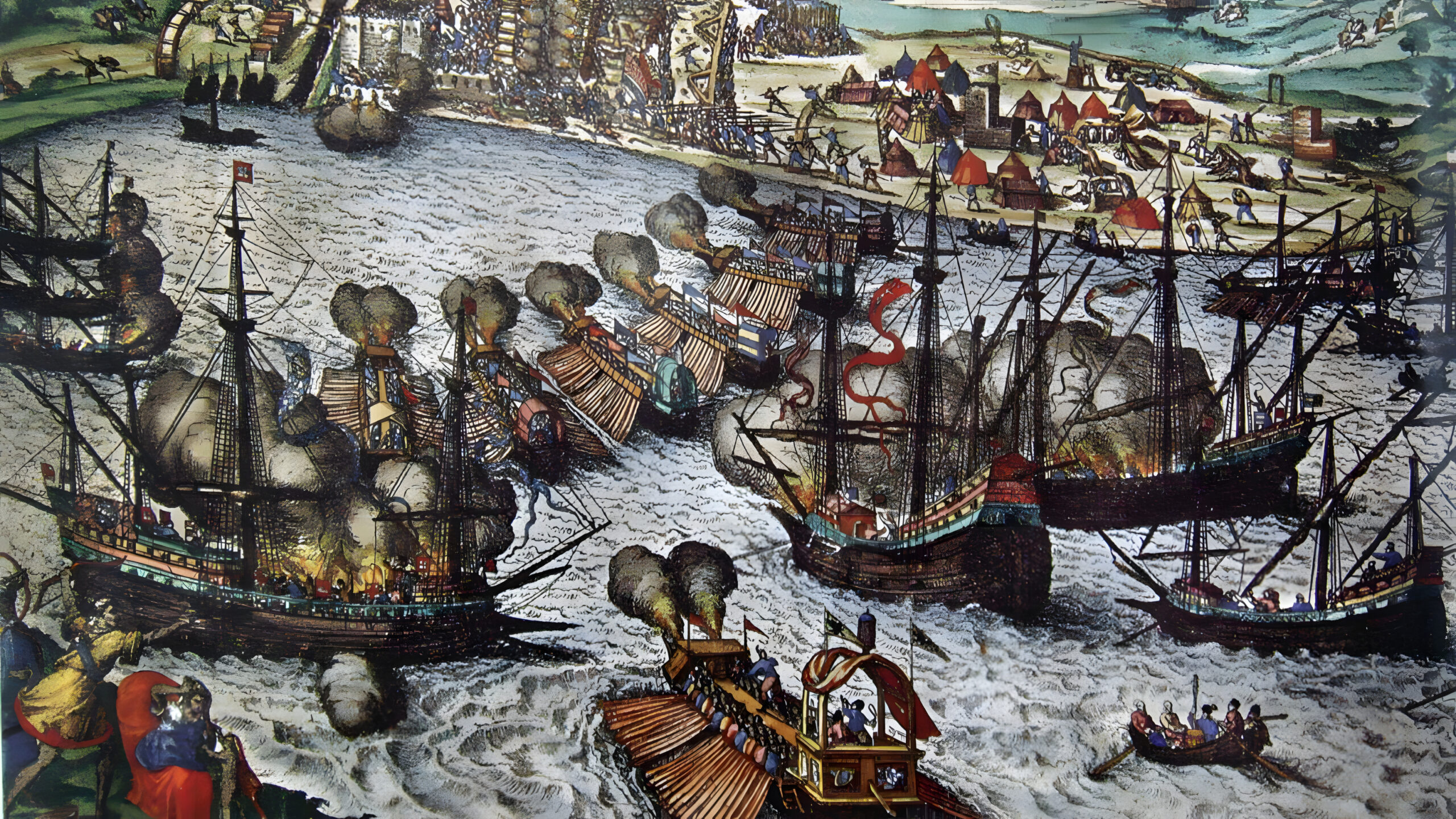
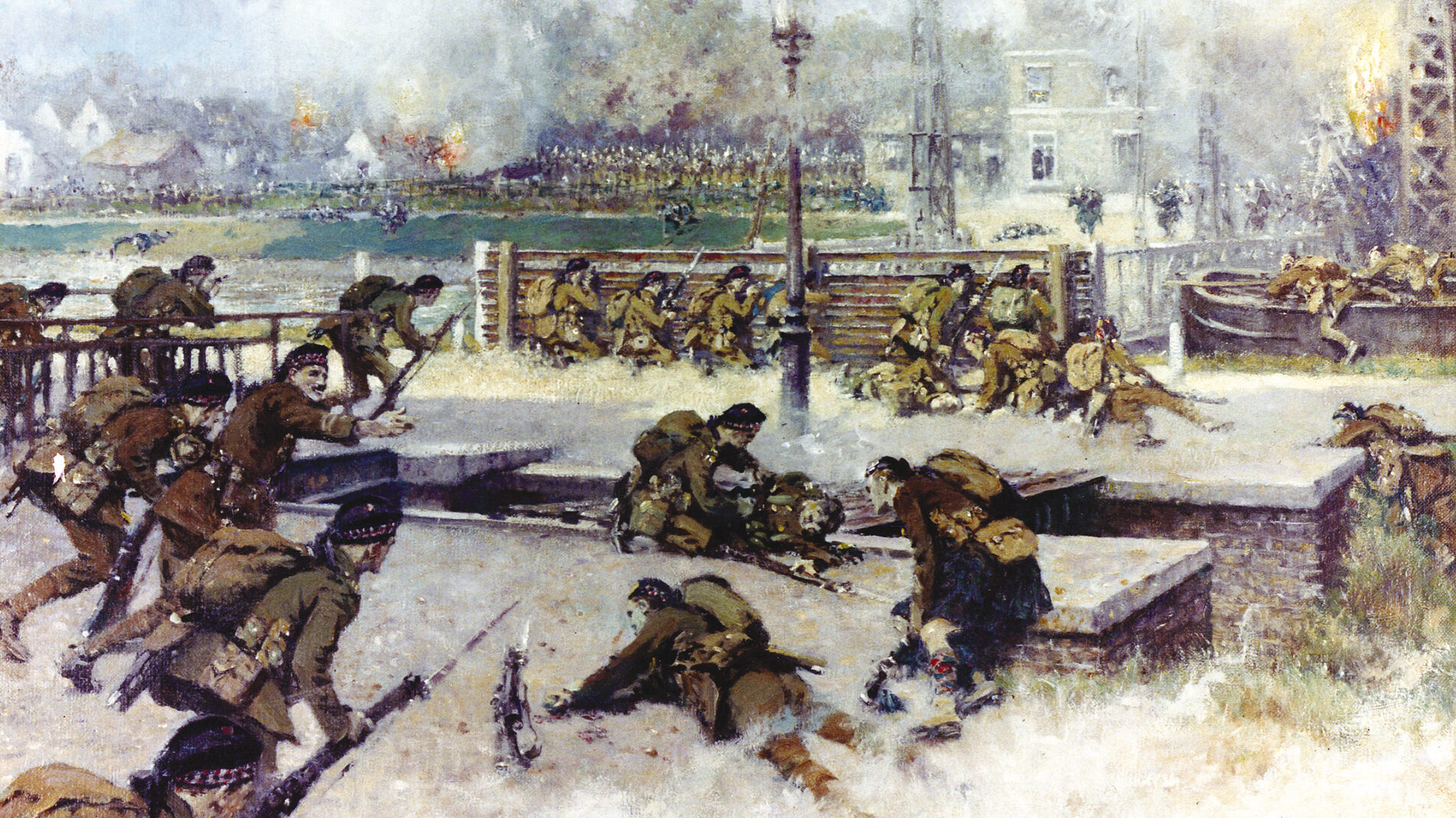
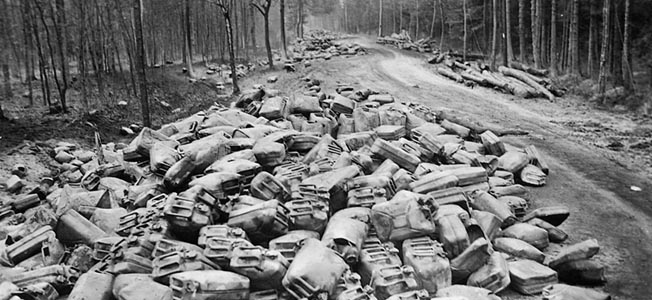
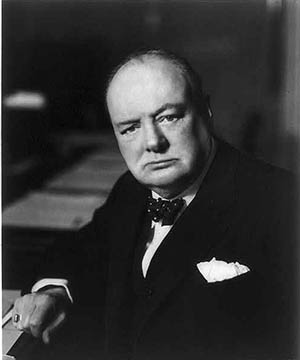
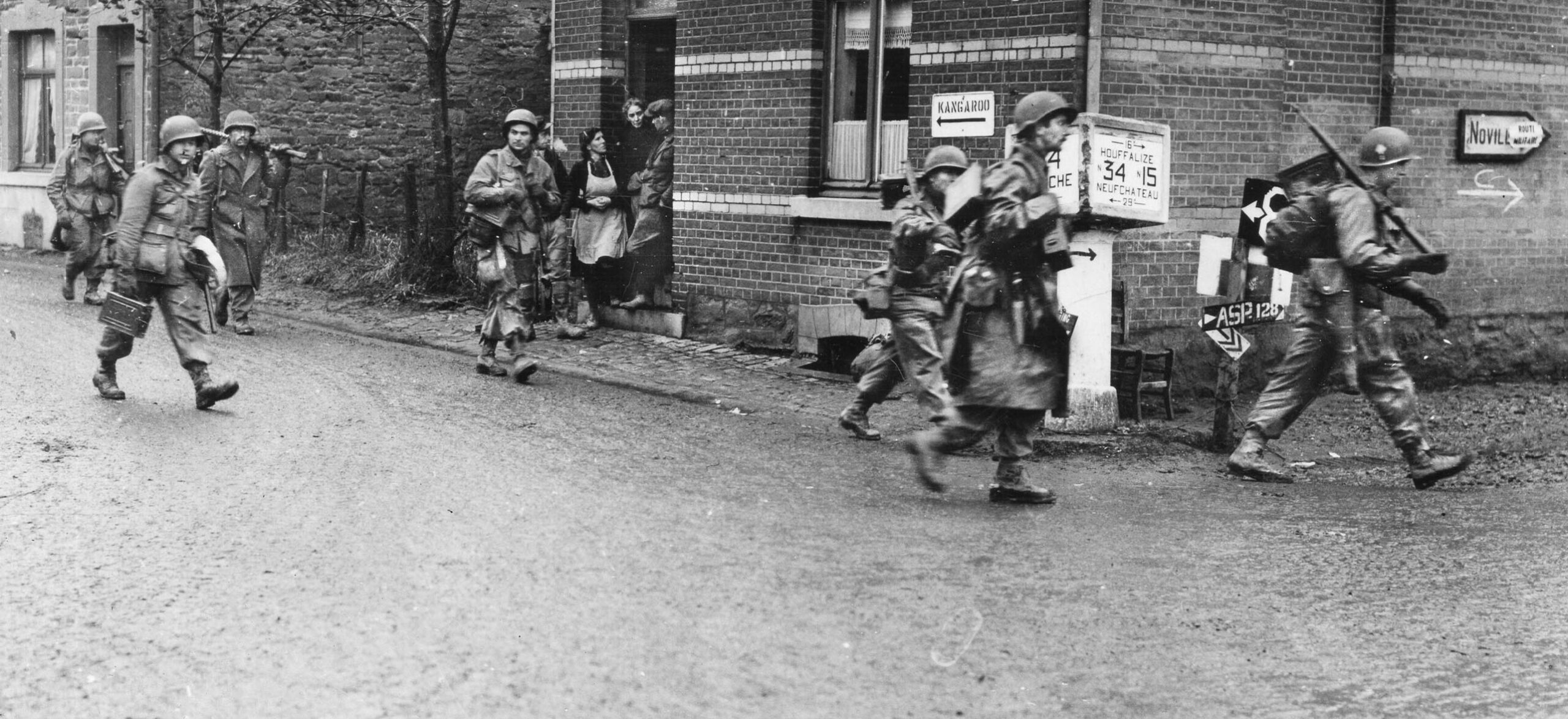
Join The Conversation
Comments
View All Comments